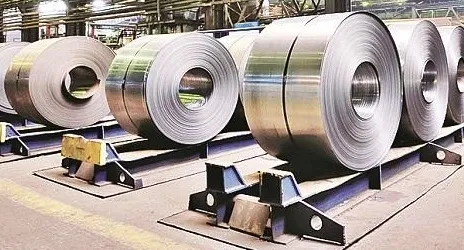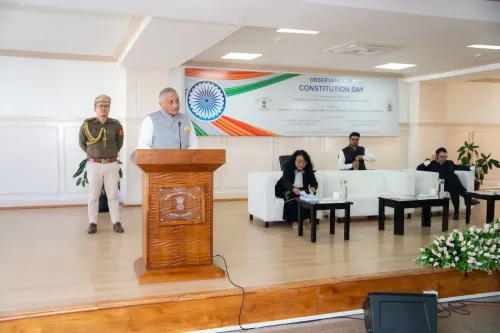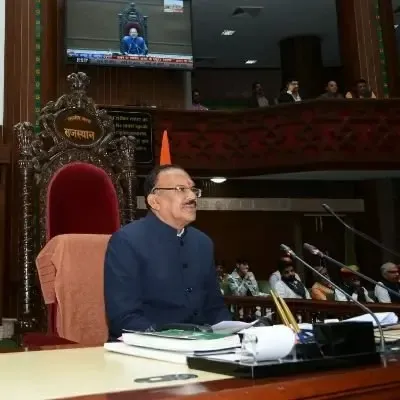What Clarification Did the Govt Provide on the Quality Control Order for Steel Products?

Synopsis
Key Takeaways
- Quality Control Orders are in place to enforce BIS Standards.
- Domestic producers and importers must comply with the same quality standards.
- The June 13 order clarifies compliance requirements.
- Substandard steel imports pose a risk to the domestic market.
- India's steel consumption is on a growth trajectory.
New Delhi, July 2 (NationPress) The Ministry of Steel has provided clarification on the issuance of Quality Control Orders related to the enforcement of 151 BIS Standards. The last Quality Control Order was released in August 2024, and no additional Quality Control Orders have been made since that time.
The Ministry emphasized that the order dated June 13 serves to clarify that steel products used as intermediate materials for manufacturing final products under BIS Standards must also adhere to the prescribed BIS Standards.
It was noted that no new Quality Control Orders were issued; rather, the June 13 order was necessary to ensure fairness between domestic steel producers and importers. Currently, there is a discrepancy where Indian manufacturers of finished steel products are mandated to use only BIS Standard-compliant intermediate materials, while there is no similar requirement for importers. This disparity could place domestic manufacturers at a competitive disadvantage compared to imported products.
The order is intended to ensure that compliance with BIS Standards for intermediate materials is maintained, which is essential for guaranteeing that the final product meets the quality standards set by BIS. Failure to do so could result in substandard final products. For instance, a significant volume of coated steel is imported into India, which relies on HR/CR Coil as the base material. If this base material is not BIS compliant, the coated steel cannot be either, even if its coating process follows BIS compliance.
Additionally, the order aims to mitigate the risk of substandard steel imports. Given the excess capacity and declining consumption in various countries, there exists a substantial risk of substandard steel being dumped into the Indian market. As India stands as the only rapidly growing large economy globally, there is a considerable chance that cheap steel could flood the market unless effective measures are implemented to ensure the importation of quality steel. It is crucial to note that if intermediate inputs, which are vital for finished products like HR coil, CR coil, or coated steel, are not BIS compliant and are of inferior quality, the final product cannot be BIS compliant, according to the Ministry's statement.
The statement also clarified that Integrated Steel Plants, which produce both intermediate and finished products, and have received a BIS licence, will not need separate licences for each stage, as the BIS certification process encompasses the entire manufacturing chain. The Ministry of Steel will provide further clarifications regarding this matter after verification from BIS for such integrated steel plants.
Concerns regarding potential price increases due to the June 13 order issued by the Ministry were described as unfounded. India boasts a steel manufacturing capacity of 200 million tonnes, which is sufficient to meet domestic demand. Therefore, the likelihood of price hikes appears minimal.
The Ministry noted that many countries have enacted safeguard duties and measures to prevent the importation of cheap steel from the global market, including sectoral tariffs and Tariff Rate Quotas (TRQs). Due to these preventative measures taken by other nations, the risk of cheap, substandard steel being dumped into India increases. Such an occurrence would have devastating effects on the domestic steel industry, particularly affecting small steel enterprises and potentially leading to job losses for millions.
India is the only major economy to experience over 12 percent growth in steel consumption over the past three years, in stark contrast to other regions where consumption is stagnant or declining. This surge in steel consumption is attributed to the government's emphasis on infrastructure development, public and private sector growth in real estate, and the rising manufacturing of capital goods. To meet this growing demand for steel, an estimated 300 million tonnes of steel capacity will be required by 2030 and 400 million tonnes by 2035. This capacity expansion will necessitate a capital investment of approximately $200 billion by 2035.
If the domestic steel industry (including both integrated producers and small-scale manufacturers) is adversely affected by the influx of substandard cheap steel imports, their ability to secure this capital will be severely compromised, hindering their plans for capacity expansion, the statement concluded.









